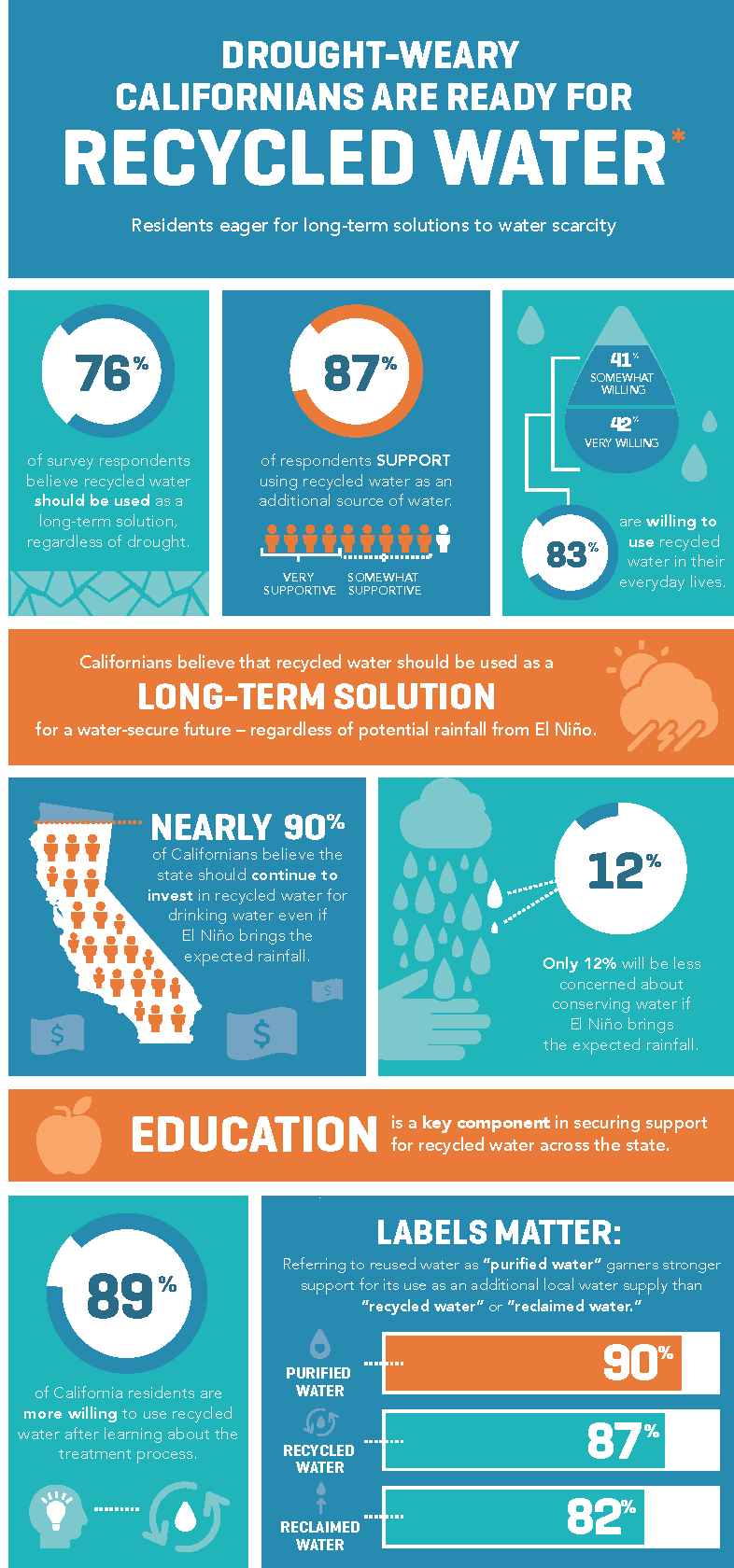If someone asked you to drink reclaimed wastewater, what would you say? What if they asked you to drink purified water? Clearly the latter sounds more appealing, but both these terms are often used to talk about the same thing: wastewater from homes and businesses that goes through a long list of advanced treatments until it meets or exceeds drinking water standards.
Feeding purified wastewater back into a drinking water treatment plant is called potable reuse and can be a key alternative water source for communities large and small. Given that drought, rapid development, and overtaxed rivers and aquifers are becoming the norm in the western United States, potable reuse has gained a lot of attention. However, the development of actual potable reuse systems in the United States has been slow, despite plenty of proven treatment technologies and a host of scientific publications illustrating its safety. Why is this? Often the biggest challenge for potable reuse projects is public acceptance, a fact that has been overlooked by governments and utilities in the past. The way we talk about potable reuse, the terms we use, and the way information is presented to the public are critical to the success of this much needed water source.
Below are some important points that have been synthesized from a combination of case studies and research on public acceptance of potable reuse:
Carefully choose what language to use and be consistent.
A 2016 survey of 3000 Californians showed that using the term ‘purified’ water, as opposed to ‘recycled’ or ‘reclaimed’ water, garners stronger public support for potable reuse. On the other hand, derogatory terms for potable reuse like ‘toilet to tap’, have been effectively used by opposition groups to negatively shape public opinion.
Engage the public and media proactively.
Without early engagement, public perception will be more susceptible to misinformation and the sway of outside sources. Once a negative public narrative has taken hold, it is very difficult for a project to recover. This was the unfortunate conclusion for the Los Angeles East Valley Water Recycling Project, an early potable reuse project that began development in 1995. Without sufficient early public outreach from the utility, public perception of the East Valley project was formed by a single misinformed, and self-serving, opinion piece from a local news outlet. The article was led by a local homeowner who, motivated by development concerns in the valley, falsely claimed the city was quietly planning to poison their drinking water with sewage. Public outcry from the misinformation eventually led to the project being shut down, despite $55 million of investment and the facility being nearly complete.
Place a heavy emphasis on education and be strategic with the type of information you provide.
One thing is consistently clear in research on the acceptance of potable reuse: the more the public knows, the more likely they will accept it. However, exactly what information is provided can make a difference. One study done in Australia suggests that it is better to provide more comprehensive information that acknowledges but refutes criticism, than to use a simpler messaging scheme. In this same study, it was also shown that focusing on the low risks of potable reuse, as opposed to the benefits, is more effective at changing public opinion. This is in line with other studies that identified health risk perception as a key factor differentiating people who are for or against potable reuse.
Deliver information through trusted entities.
Public trust is at the heart of acceptance, but trust in certain authorities can be an issue. In some areas, it has been identified that there is higher trust in researchers, public health professionals, and water utility representatives, and lower trust in government officials. Identifying trusted groups or individuals in a community to deliver information on potable reuse is important for effective messaging. A great example of this comes from Castle Rock, Colorado, where a local brewery was contracted to brew beer using water from a pilot potable reuse project. When trusted local institutions like a brewery are on board, other members of the public are more likely to follow.
Understand the demographics of an area.
Research done in the Reno-Sparks region of Nevada showed that perceptions of potable reuse varied significantly between urban, suburban, and rural residents. Suburban participants were by far the most accepting of potable reuse, despite similar water supply concerns in all groups. Researchers suggest that this may be because reclaimed water is often used more in suburban areas for non-potable applications, like irrigating residential landscaping and parks. This exposure could make suburban residents more comfortable with the idea of other reuse applications.
The points above are just a broad starting point for a complex and multidimensional issue. Ultimately, each city, town, or region will have their own nuances that require special consideration. With enough attention to these details by local authorities, public acceptance of potable reuse can be achieved.

